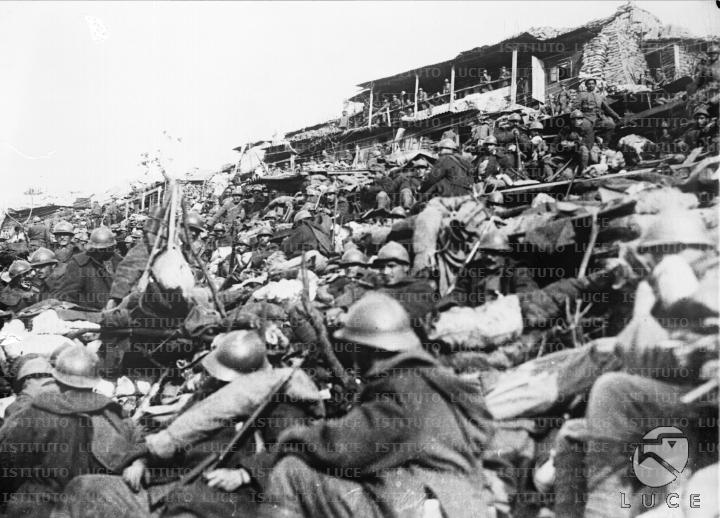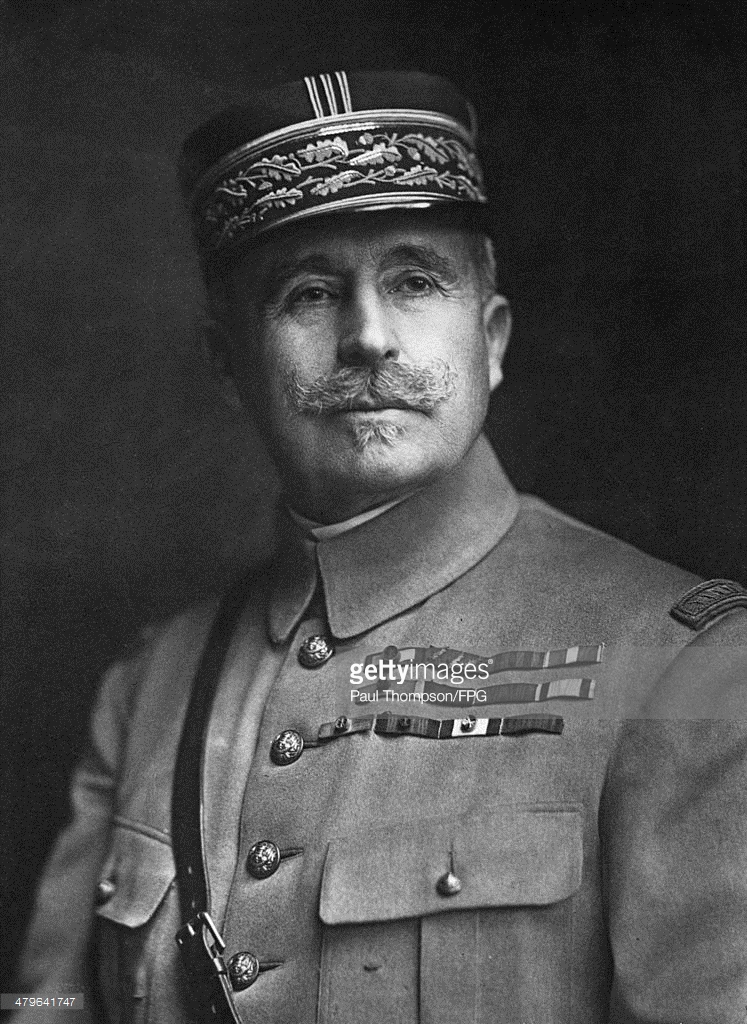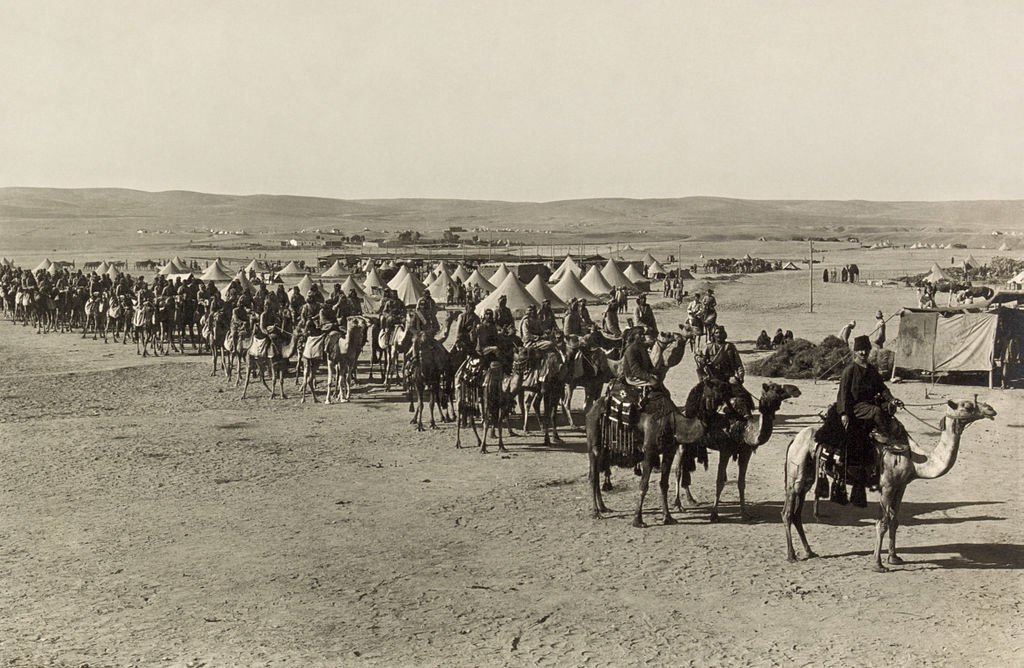Allied Offensives Crumbling
Desperation From France to the Middle East.
Special to The Great War Project
(24 April) It is one disaster after another for the Allied troops during these horrible days of the World War, a century ago.
The French launch their so-called Nivelle Offensive, named after the French commanding general, in mid-April one hundred years ago.

French troops gather for attack, the Nivelle Offensive, April 1917.
Coming after the British defeats at Arras and Vimy Ridge, the French operation too “was a disaster,” writes historian Martin Gilbert.
It is the first time the French throw tanks into their battles, but it doesn’t help.

General Robert Nivelle, commander of French forces on the Western Front.
“Nivelle planned to advance a full six miles,” Gilbert reports. “His men were halted after six-hundred yards.”
Nivelle had expected about 15,000 casualties; there were almost 100,000.”
The lion’s share of the French tanks and aircraft are knocked out on the first day of the offensive. “Every element in the planning proved disastrous,” writes Gilbert.
The Allied losses in these days a century ago are not confined to northern France. Reports Gilbert, “As Nivelle’s offensive on the Western Front was crumbling into failure, in Palestine the British launched their second attempt to capture Gaza from the Ottoman Turks.
The orders from London: “Jerusalem by Christmas.”
The Turks are outnumbered in troop strength by a ratio of two to one. And the British bring poison gas to Palestine, but despite that, the attack was a failure, reports Gilbert. “Gaza remained under the complete control of the Turks.”


Turkish machine gunners, Battle of Gaza, April 1917
Back on the Western Front, according to Gilbert, in mid-April “an ominous foretaste of what was to become a storm took place on the River Aisne when seventeen French soldiers deserted their
trench shortly before an attack was due to begin.”
The French mutinies are spreading rapidly. The French press the British forces to enter this battle. At first the British are reluctant; after they had just experienced a major defeat at nearby Arras and Vimy Ridge.
But the French insist. Their command fears that if they don’t bring in the British, they will collapse.
As indicator of just how desperate the Allies are, writes Gilbert, “twice as many British troops as German were being killed in the renewed attacks the British command now demanded.”
Some in Britain and France urge caution and patience. After all the Americans are now in the fight and could very well reverse the strategic balance in just those zones causing so much trouble for the French and British.
But Winston Churchill makes the counter-argument. “Is it not obvious,” he writes, “that we ought not to squander the remaining armies of France and Britain in precipitate offensives before the power begins to be felt on the battlefield.”
Churchill gets no answer.
And in any case, the power of the Americans, not yet deployed in France. is unlikely to be felt for another year, or more.
And now another unexpected but crucial development in Russia.
On April 24th a hundred years ago “in an unprecedented act of divisiveness,” reports Gilbert, “the Ukraine demanded autonomy from Russia. Strikes in the Russian factories had already reduced Russia’s coal production by almost a quarter.”
And in an extremely ominous sign for the Allies, the Russian commander-in- chief informs the Ministry of War “that information from all sides indicates that the army is systematically falling apart.”
